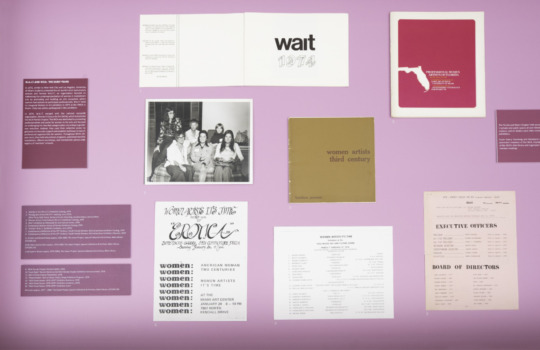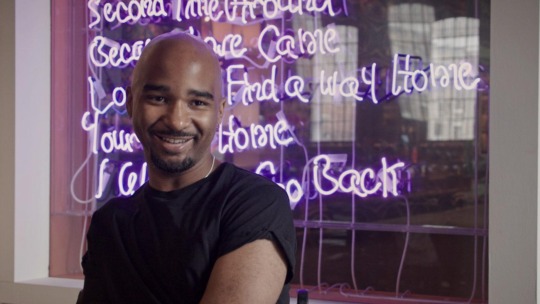
The idea for BURNAWAY originated from a front-porch conversation about the need for more dialogue about local art. Please welcome Fay Gold, today’s guest writer of Our Front Porch.
I am currently writing a book, a memoir entitled Basquiat’s Cat. It tells the story of a young mother of three from Brooklyn who brought the controversial work of Andres Serrano, Robert Mapplethorpe, Joel-Peter Witkin, Cindy Sherman, Keith Haring, and Jean-Michel Basquiat to the Bible Belt in the early ’80s. Here is the story behind the title Basquiat’s Cat, followed by some questions for Atlanta’s future.
In 1982, Holly Solomon, the most important New York dealer during that period agreed to do a group show of her artists in my gallery in Atlanta. I had opened the gallery in 1980 because I wanted to share my vision of art as a positive, provocative, and progressive force in society.
I was leaving for New York the next day, because it was an important birthday and my husband wanted me to find my own gift. I’m sure he assumed I would come home with a piece of jewelry! I asked Holly to recommend some artists I should take a look at while I was there. She mentioned Keith Haring, Eric Fischl, and Jean-Michel Basquiat. I had never heard of any of them!
I stopped at Annina Nosei’s Soho gallery where Basquiat was having his first one-man show. I was completely blown away by his work! I chose a 10-foot orange, black, and gold diptych. It was $5,200, which was just over my birthday budget. I called my husband and told him I wanted to purchase a painting instead of a bracelet, and I would pay the extra $200 myself. I was then escorted to the gallery basement where Basquiat was working. The spontaneous force and narrative of that painting became the standard for all my future curating and collecting.
By 1985, Basquiat had left Annina Nosei and Mary Boone, so I decided to approach him about buying some drawings and doing a show of them. He invited me to his studio on Great Jones Street in New York, which at the time belonged to Andy Warhol. When I entered the space, there were paintings lying on the floor, and a giant white maincoon cat with a black tail was walking across them. The cat’s name was “Dog,” but he was sometimes also called “Rasputin.” I told Basquiat that I had a Persian cat and Yorkshire terrier at home. He picked out 11 drawings, for which I paid, well, not very much.

Six months later, Basquiat unexpectedly called me in Atlanta and asked me if I wanted his cat. He was traveling a lot and leaving the cat next door at a restaurant where he was hiding in the rafters and getting very dirty. He wanted the cat to have a good home and thought of me. Naturally, I said “yes.” He bought a seat for the cat on a plane and sent him to Atlanta. My daughter Gena raised and nurtured the cat and renamed him “Basquiat” in honor of the artist.
The cat hid in a laundry basket and hissed for two weeks straight. Gradually he adjusted and became a wonderful addition to our family. He lived to be 17 years old and had definitely found a loving home.
In 1989, The Andy Warhol Diaries were published. The entry on page 716 for Tuesday, February 25, 1986, reads as follows: “Jean-Michel sent the cat that didn’t catch mice to Atlanta. He sent it on a plane for $100 to some gallery there. The poor cat probably never got taken care of—I mean, can you imagine being a cat in the hands of Jean-Michel?”
From 1962 until 1966, I studied painting and drawing in Riverdale, New York, with Zita Querido, a protégé of Hans Hofmann. In 1966, I suddenly was plucked from New York to Atlanta when my husband relocated his lingerie factory to Cartersville, Georgia. I had been collecting pop art and found myself adrift in a Southern society that the art critic Robert Hughes summed up when he said, “There are only two things people know about modern art …. One is Picasso and the other is I don’t like it!” George Bernard Shaw said, if the end of the world was announced, he would move to Cincinnati, because they are always 25 years behind times. That is how Atlanta was in 1966.
Consequently, I retreated to the art studio I had built in the backyard of my home. After my children went to sleep, I tirelessly painted into the wee hours of the morning. Soon, the neighbors showed up beseeching me to teach their children art. Enrollment at the Fay Gold School of Art soon swelled to 60 children and adults a week. I also led art trips to New York and Washington, DC, and advised collectors. In 1980, after 15 years in the backyard, I moved the school to a commercial space in Buckhead. When the plant shop in the front of the store failed, I decided to open a small 24-by-24-foot gallery. It debuted with an exhibition of sculpture by George Segal, followed by Robert Rauschenberg, Alex Katz, Irving Penn, Robert Mapplethorpe, and Cindy Sherman. It took three years to show a profit. Ultimately, I closed the art school in the back and expanded the gallery. What it comes down to is this: I brought to the city a new visual landscape, and I became a collection builder, curator, educator, and keeper of the ever-expanding legacies of artists who tragically died early.
And I’m not done yet! Mark Twain said, “Youth is a disease we all recover from.” Actually, may I never recover! In fact, may you never recover, either! The idealism, energy, and passion of youth hold a better future for all of us.
Although art can be a great investment, it is not about money. It is about the personal experience of the artist and about the artists and their own lives—artists who dream and create and work and eat and sleep and have families and pets just like the rest of us. We can create a new definition of success that admires the artists and idealists among us—one that doesn’t trade only in dollars but in hope. Nothing worthwhile has ever happened except when somebody, somewhere, was willing to hope. And you must imagine, then fight, and then work for what did not seem possible before.
What I wish is that young artists will engage in being free thinkers and find new solutions to old problems. We need you to be reformers, boat rockers, and, if necessary, even rabble-rousers. Or, as a friend of mine likes to say, “Be angelic troublemakers.”
Artists: the world awaits your genius, your power, and your magic!
My questions for BURNAWAY’s Front Porch:
Are the conventional, safe, or familiar paths the only or best paths? Is being idealistic fashionable in our contemporary times? Does the American Dream need to be re-imagined?
And, for artists, do you have a tactic of engagement and a clear picture of the world that is going to receive your art?
Please feel free to participate in the open comments underneath this article, or share it elsewhere and discuss informally with your friends. Talking in person counts!
Our Front Porch is a series inviting guest contributors to share thoughts on local art for open discussion with you, our readers.




